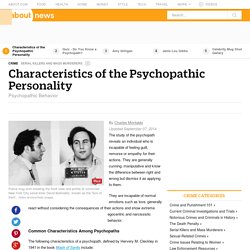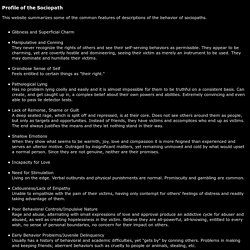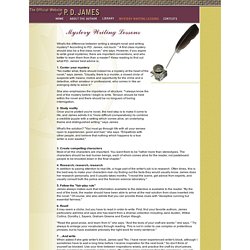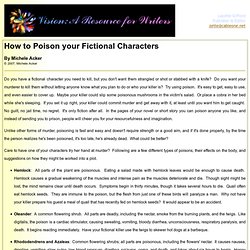

Characteristics of the Psychopathic Personality. Updated September 07, 2014.

The study of the psychopath reveals an individual who is incapable of feeling guilt, remorse or empathy for their actions. They are generally cunning, manipulative and know the difference between right and wrong but dismiss it as applying to them. They are incapable of normal emotions such as love, generally react without considering the consequences of their actions and show extreme egocentric and narcissistic behavior. Common Characteristics Among Psychopaths. The Sociopathic Style. Listed below is the Hare Psychopathy Checklist-Revised, a diagnostic tool used to identify psychopathic traits.

It was compiled by Dr. Robert Hare, Emeritus Professor of Psychology at the University of British Columbia, where he has taught and conducted research for more than four decades, devoting most of his academic career to the study of psychopathy. Dr. Rant on sociopathic characters. I tried to prepare for this one by doing a lot of research.

But a) a lot of the research contradicts itself, and b) the main point of this rant, as it is with all the ones on characterization, is not sociopathy. It’s writing characters whom the writer thinks of as sociopathic. 1) You can play with a lot of the terms under the surface. Here comes the vocabulary divide. If you’re writing an urban fantasy or one in which the scientists are getting or have gotten around to classifying mental disorders (a Victorian fantasy that concentrated on things like “bicycle face” and “sexual inversion” would be wonderful, though there’s no way it would be able to compete with the sheer amount of historical batshit), then “sociopath” is not going to come out of the blue.
But that doesn’t mean that you can’t do research on sociopathy—the kind on which I skimped—and then have a character act in accordance with what you learned. Show the traits instead. Profile of the Sociopath. Profile of the Sociopath This website summarizes some of the common features of descriptions of the behavior of sociopaths.

Glibness and Superficial Charm Manipulative and Conning They never recognize the rights of others and see their self-serving behaviors as permissible. They appear to be charming, yet are covertly hostile and domineering, seeing their victim as merely an instrument to be used. The Consulting RPCW. Writing with Writers: Mystery Writing. Ten Rules for Mystery Writing. By Ginny Wiehardt Updated March 29, 2016.

More than writing in many other genres, mystery writing tends to follow standard rules. This is because readers of mysteries seek a particular experience: they want the intellectual challenge of solving the crime before the detective does, and the pleasure of knowing that everything will come together in the end. Of course, the best way of testing the mystery writing rules that follow is to read widely in the genre. Mystery Writing Lessons. 3.

Create compelling characters Most of all the characters are important. You want them to be "rather more than stereotypes. The characters should be real human beings, each of whom comes alive for the reader, not pasteboard people to be knocked down in the final chapter. " 4. Research, research, research In addition to paying attention to real-life, a huge part of the writer's job is to research. 5. Links on killers messing up: - RP and Writing. Compilation of links on Forensic Entomology: - RP and Writing. Compilation of links on Forensic Psychology: - RP and Writing. Compilation of links on Digital Forensics: - RP and Writing. Compilation of links on Forensic Anthropology: - RP and Writing. Forsensics 101: Toxicology - RP and Writing. Forensics 101: Impression Evidence: - RP and Writing. Crime Scenes: An Information Session. - RP and Writing. Compilation of links on forensics. - RP and Writing. Assassins and Assassinations: An Information... - RP and Writing.
Compilation of links on mass murderers. - RP and Writing. Compilation of links on writing serial killers: - RP and Writing. How to Poison your Ficiontal Characters. Do you have a fictional character you need to kill, but you don't want them strangled or shot or stabbed with a knife?

Do you want your murderer to kill them without letting anyone know what you plan to do or who your killer is? Try using poison. It's easy to get, easy to use, and even easier to cover up. Maybe your killer could slip some poisonous mushrooms in the victim's salad. Or place a cobra in her bed while she's sleeping. Unlike other forms of murder, poisoning is fast and easy and doesn't require strength or a good aim, and if it's done properly, by the time the person realizes he's been poisoned, it's too late, he's already dead.
W R I T E W O R L D. Spooky (And Quite Possibly Haunted) House Generator. How To Write a Death Scene. People often visit Creative Writing Corner searching for answers about how to write a death scene, so it’s about time that I gave my thoughts about it.

I was first given the assignment to write a death scene as a stand-alone piece when I was a freshman in college, in my very first creative writing class. I chose to write a creative non-fiction piece about a relative of mine. The piece ended up being fairly successful; it was published in my college newspaper and I received a lot of very kind comments about it. How to Write Murder Mysteries: 9 steps. Premium Custom Ghostwriting Service. How to Write a Mystery Novel - our Writing Software. If you are looking for tips on how to write a mystery novel I would guess that you are struggling with two key decisions: what sort of mystery to unravel, and what point of view to adopt.

Mystery novels are like crossword puzzles: there is a very well understood structure to them, but the degree of difficulty of solving them (and satisfaction for the reader) is often more important than the mystery itself. The more clues the better, the more complex the relationship between the elements, the better.
There is always a very strong back story – often for the victim if the mystery revolves around personal misfortune. How to Write a Supernatural Story. How to Write a Detective Story With a Formula. How to Write Gothic Fiction: 13 steps. Steps Part 1 Developing Ideas for Your Gothic Fiction <img alt="Image titled Write Gothic Fiction Step 1" src=" width="728" height="485" class="whcdn" onload="WH.performance.clearMarks('image1_rendered'); WH.performance.mark('image1_rendered');">1Choose a time when your story will take place.

Decide if your story will take place in the past or present. Many gothic fiction stories take place a century or even further in the past. <img alt="Image titled Write Gothic Fiction Step 4" src=" width="728" height="485" class="whcdn">4Develop a plot. How to Write a Murder Mystery in Just 30 Days. The eerie suspense of horror exists within the minds of the creator. A suspenseful mystery begins with an extraordinary main character and a suspenseful plot. What are the key elements to writing a murder mystery? Eerie moments of life creates suspenseful events; perfect for murder. It isn't hard to write a murder mystery worth reading. This article will go into depth of writing the perfect mystery in just thirty days. Just how can you write a murder thriller in thirty days?
How to Write a Suspenseful Opening. Elements of the Gothic Novel. Robert Harris Version Date: June 15, 2015 The gothic novel was invented almost single-handedly by Horace Walpole, whose The Castle of Otranto (1764) contains essentially all the elements that constitute the genre. Walpole's novel was imitated not only in the eighteenth century and not only in the novel form, but it has influenced the novel, the short story, poetry, and even film making up to the present day.
Gothic elements include the following: 1. Setting in a castle. The castle may be near or connected to caves, which lend their own haunting flavor with their darkness, uneven floors, branchings, claustrophobia, and mystery. Translated into the modern novel or filmmaking, the setting might be in an old house or mansion--or even a new house--where unusual camera angles, sustained close ups during movement, and darkness or shadows create the same sense of claustrophobia and entrapment. 2. The Gothic Novel: What is Gothic Literature? In many ways, the Gothic novel is a direct response to eighteenth century ideals of formal realism, which is why it is essential to understand formal realism first before defining Gothic literature.
Formal realism is about creating a reality through the experience of one single character. Its focus lies in the internal drama of the individual rather than the external and explores individual consciousness and perception. Furthermore, formal realism uses diction that is less elaborate and ornate than the literature of the past in order to reflect everyday life.
Free Thriller Novel Writing Tips. Thrillers are a genre that many people can't get enough of. Building tension and keeping people turning pages are essential for successfully crafting these types of stories. As with any specific type of writing, even those with a natural talent will need some pointers. While "thriller" is not, strictly speaking, a format, a few tips can go a long way in giving your audience -- and your editor -- what they are looking for in your writing. Writing Breakout Thrillers You don't want just another mass-market paperback on the shelf. Formula of a good Crime Story. Tension. Hook Your Readers With Tension By Laura Backes, Write4Kids.com Tension. How to write real ghost stories. Space Capsule calling Planet Earth! Retired Astronaut Vincent Grant reporting for duty!
Chapter 37: Writing about crime. In the first two chapters of this four-chapter section, we looked at the practical aspects of reporting crime. Creative Writing Prompts: Secrets and Lies for Your Characters. Nothing is better (or more fun for the writer) than a story-relevant secret or lie. Give some dilemma beneath the surface story to give your character depth, add suspense and tension, and keep your reader turning the pages. You can drop hints throughout your writing and when the reveal comes—you will surprise, shock, and delight your reader. Creating a character with a strong internal conflict, secret, or burden makes for one compelling read! Tips To Write Better Royalty, Nobility, & Other Upper-Class & Important Characters.
You may have seen this one before: a young woman gets roped into attending an upper-class party of some kind. She hates the dress. Assassins: Tips & Guidelines To Write & Play Them More Believably. When people imagine assassins, they often envision sleek, seductive figures armed with pretty little stabby blades or some other kind of special super weapon. Spies: A Few Things Writers & Roleplayers Should Know About Them. Spies are pretty popular characters both in fiction and in roleplays, but there's quite a bit of confusion on what spies are supposed to do and exactly how they might go about doing it. So here's a basic look into that. Basic Tips To Write Better & More Despicable Villains. Show your villain personally doing something despicable. On Writing Misfits, Loners, & Malcontents.
The Worst & Most Frustrating Ways To Kill Off Main Characters.